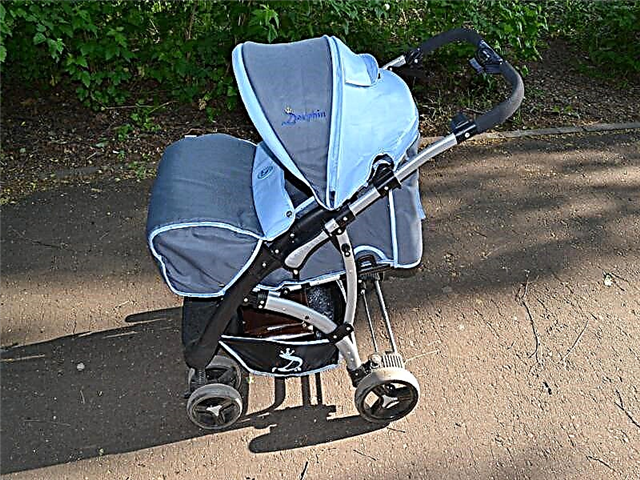
In one of my articles, I told you how to teach a kid from scratch the basics of playing chess. But mastering the rules of chess is only the beginning of a long journey.
If the child already knows how the pieces move, is interested in chess, and your knowledge is not enough, it is better to entrust the training to professionals. From about 4 years old, he can be enrolled in a chess club - it can be located in the nearest Children's Art House, in a chess club or even at a school. There he will be able to play in tournaments and even get a rank.
But experts do not advise preschool children to often participate in competitions - losses can negatively affect the fragile psyche.
Even if you enrolled your child in the chess section, do not forget about classes at home.

Chess lessons by age
2-3 years old
At this age, it is still difficult for a baby to master a large chessboard. Therefore, you can independently craft or draw a battlefield for kids. The squares of this board should be large, they should be much smaller than on a regular board.
Instead of standard figures, you can make figures of animals - wolves, hares, bears. The animal's moves should be simple - all in the same direction, but for a different number of fields. You can learn to "eat" figures. It is important to convey to the kid the approximate conditions of the game, albeit in such a modified form.

At 4 years old
At 4 years old, the child is an independent person. At this age, you can teach him the real rules of chess, but it is better to do it in a playful way, not to press and force him to play forcibly. He is still unable to hold attention for a long time, so classes should be short, no more than half an hour. You can show an interesting cartoon on this topic or tell a fairy tale about chess pieces.
Watch a cartoon with Fixies with your baby.
It is good for young children to include in the lesson a physical education, somehow related to the game - for example, squats with a chess piece they like in the palm of their hand.
At 5-6 years old
At this age, parents most often bring their children to the chess sections. The child is already ready to master the chess game in full. After learning the basic laws of chess, you need to start learning how to make moves "correctly", that is, to make strong moves - to put pieces in the center of the board, to attack, to defend when attacking.
But the five-year-old is still small, so do not forget about children's teaching methods - educational fairy tales, funny poems that help to remember the rules.
There are different methods of teaching preschool children, but they have in common that the main activity of a kid at this age is play. Therefore, it is necessary to teach only in the form of a game.

School children (over 7 years old)
Master chess science to the fullest - solve problems, train the best tactical techniques (for example, fork, pin, and others), tell interesting facts about chess. You will have to learn how to play strongly yourself - many children at this age are already serious rivals.
Recommended sequence of activities with the child.
It is better to devote the first lesson to a story about the origin of chess - a chess legend adapted to the student's age.
In lesson two, explain that the board is the battlefield and the pieces are the troops. Tell us what each figure does in the army. Pawns are infantry, horses are cavalry, elephants are an army on elephants, rooks are boats, a queen is a commander, a king is a general.

Then devote one lesson to each figure. Disassemble in detail how they walk and "eat" enemies. Try to present it all in an interesting way.
For example, you can tell a tale about a pawn that managed to overcome all difficulties and became a queen. Or dress up some figure, make her a house on the board, hunt for her.
To consolidate your knowledge of shapes, play the games:
- "Magic bag" (let the child determine by touch which figure he pulled out);
- "What common?" (you need to compare two shapes - how they are similar and how they differ, for example, color, top, and more).
In the next lesson, learn the correct placement of the figures and do not forget to repeat it. If the baby finds it difficult to arrange the figures in the next lesson, you can do this with tips, help him. Then explain the rules of the game, the concepts of check, checkmate, strong move.
The kid should understand that in chess the winner is not always the one with the most pieces.
Play the first game. Until then, you can play a limited number of pieces - those whose moves you have already learned.

Basics of strategy
For a senior preschool and school child you need to explain the basics of strategy that every chess player should know:
- Always think about protecting your king. If he falls into the "trap", the game will end. Therefore, even when attacking the opponent's pieces, take care of the safety of your main piece. For example, castled and hide it in the corner of the board.
- Do not "yawn" figures - do not just give them away.
Each piece has a certain price that needs to be told about the child:
- A pawn is worth 1 point;
- Knight and bishop - 3 points each;
- Rook - 5 points;
- Queen - 9 points;
The king is priceless, because if he is checkmated, the game ends.
The kid can be shown the value of the pieces by the example of pawns or any other things - for example, a knight costs 3 pawns (candies), a rook costs 5 pawns (candies).
- Control the center of the board. The figures in the center are stronger than those on the outskirts. They have more scope - options for moves and attacks. Therefore, it is advisable to "capture" the center - to put there, for example, pawns and knights that cannot move long distances. And with long-range pieces - bishops, rooks, queen - you can keep it under control from afar, attacking the central squares.
- Use all chess pieces in the game. If some of them "rest", remaining in their original places, you may not have enough strength to attack. The entire army must participate in the game, in this case, victory will not be long in coming.

Chess Tournament Rules
The child needs to explain the rules of chess tournaments and use them at home. A very important rule - “touch - move”, “take - take” - if you touched a piece, you need to make a move with it. If it is an enemy piece, you must eat it if such a move is possible.
In addition, tournaments are always held with a special chess clock, on which any control can be set. If time is up, you lost. Get a watch and sometimes play with it at home.
But do not get carried away with too fast chess (for example, 5 minutes). The child must think and analyze the position, with such control it is impossible.

How to play with your child
- Do not always strive to win the baby - so he can get upset and quickly lose interest in the game, sometimes you can draw the game or even lose.
- Do not lose often - the child will get used to constantly winning and will be painful about losing. You can give a small handicap - a piece so that the game is equal.
- It is useful to analyze the mistakes after the game - which of the kid's moves are good and which are not very good.
- Play with your child as often as possible, and he will become a strong opponent.
- Praise him even for small achievements - he found a strong move, managed to make a draw, solved a problem.

Don't ask your child to immediately become a champion.
It is difficult to overestimate the benefits of chess and its influence on development - they perfectly develop logic and abstract thinking, teach perseverance and perseverance in achieving goals. Therefore, even if the child does not become a strong chess player, playing will certainly help him learn better. For example, many chess players are good mathematicians, because the algorithm for solving math and chess problems is very similar.
Chess also teaches responsibility - the child must independently choose which move to make on the board, and he himself is responsible for the consequences of the choice.

How to interest?
Many parents ask themselves the question of how to interest a child in chess if he does not show a special desire to play it? There can be no exact instructions here. You can buy a large and beautiful chessboard (the smaller the child, the larger the pieces), and examine the pieces together with the baby. To tell that they are all an army, where pawns are soldiers.


If you are already familiar with the basics of chess, you can play educational games around chess, suitable for 2 children. For example, a game of exterminating pawns. Only pawns are put on the board, and opponents play only with them. To win, you need to eat all the opponent's pawns.
You can hold the baton - who will place the pieces faster and more correctly. You can sew, draw, mold chess troops, come up with other tasks.
When someone in the family plays chess - for example, dad, grandfather, a child can ask him to teach him - personal example is important here. Anyone who knows how to play can give a small master class.
If, after all your tricks, the child is not interested in the game, it is better to return to it after a few months.
You do not need to force to play, the harm from this will be more than good.
The Fixies' tips on how to play chess, see the next video.



